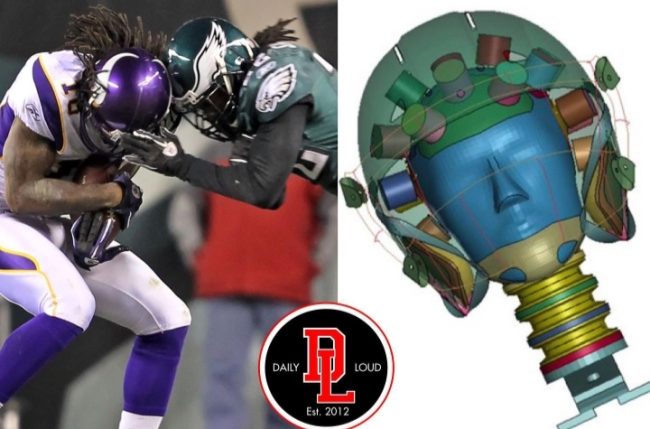Entertainment
New Football Helmet Design Could Protect Players From Concussions That Can Lead To Severe Brain Injuries
Carbon-Fiber Football Helmet Design Could Protect Players From Concussions That Can Lead To Severe Brain Injuries
An innovative new helmet design protects football players from the concussions that can lead to severe brain injuries. That’s the hope of Stanford University scientists developing a prototype that should reduce the impact of hits to the head by one-third or more.
Their secret? A carbon-fiber football helmet with 21 liquid shock absorbers spread throughout.
“Most of the members of our team have a personal connection to traumatic brain injury and we care deeply about ensuring long-term athlete brain health,” Nicholas Cecchi, a Ph.D. candidate at Stanford and lead author of the study, said in a statement.
“Concussion and repeated head impacts are still a major problem in contact sports,” Cecchi added, “and we believe that improved helmet technology can play an important role in reducing the risk of brain injury.”
View this post on Instagram
Professional athletes are at risk of brain injuries from repeated blows to the head. These can lead to chronic traumatic encephalopathy, a severe condition that kills nerve cells in the brain.
CTE gets worse over time, according to the Mayo Clinic. The only way to diagnose CTE is after death, when the brain is autopsied. To evaluate their design, the Stanford scientists turned to a “finite-element” modeling program, used by engineers to simulate the performance of a device before it is manufactured.
Their helmet was tested with the high-impact protocols used by the NFL, and its performance was compared to that of four existing helmets.
The results of their testing were unambiguous: The helmet with liquid shock absorbers dramatically reduced impact severity and strain on the brain, producing the lowest HARM score in 33 of 36 impact situations.
The average reduction in HARM score with the new helmet was 33%, and as high as 56% reduction in some situations. The study was published Friday in Frontiers in Bioengineering and Biotechnology.
“The next step for our team is to translate the computer model to a physical prototype,” said lead study author Cecchi.




You must be logged in to post a comment logged in Login